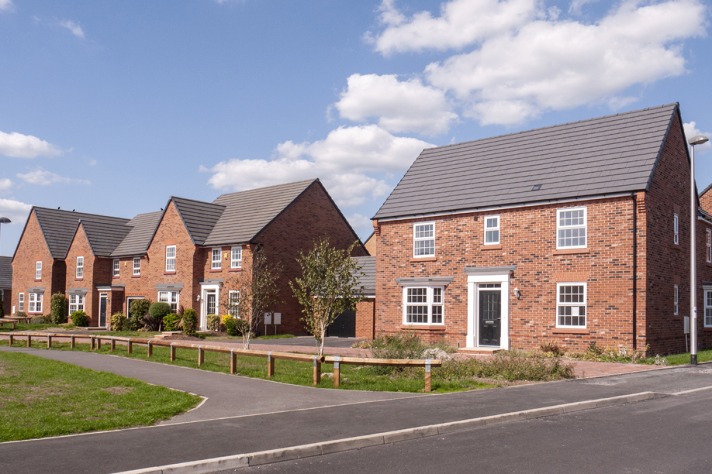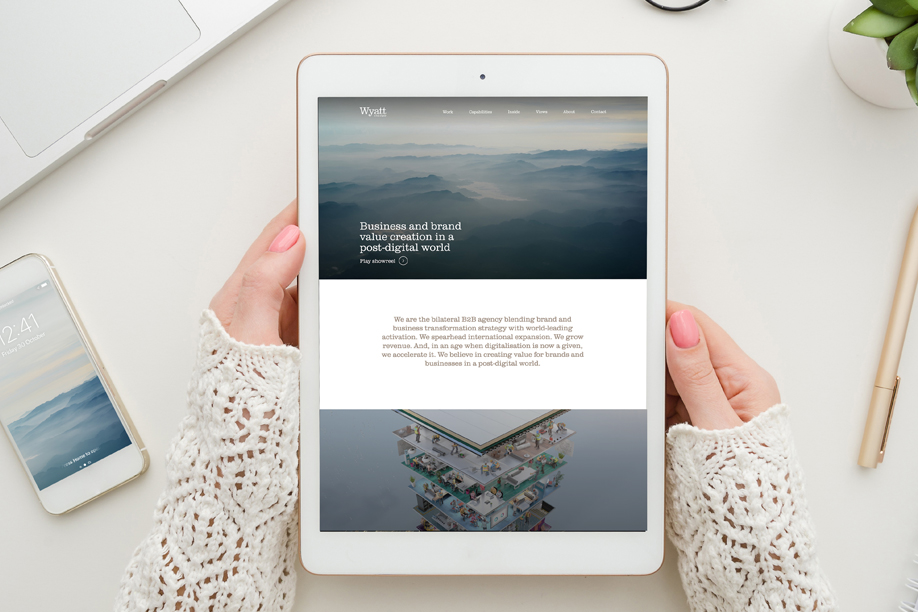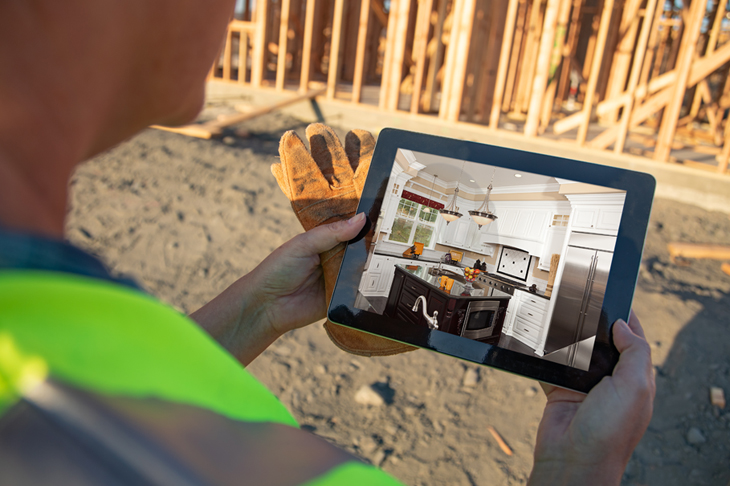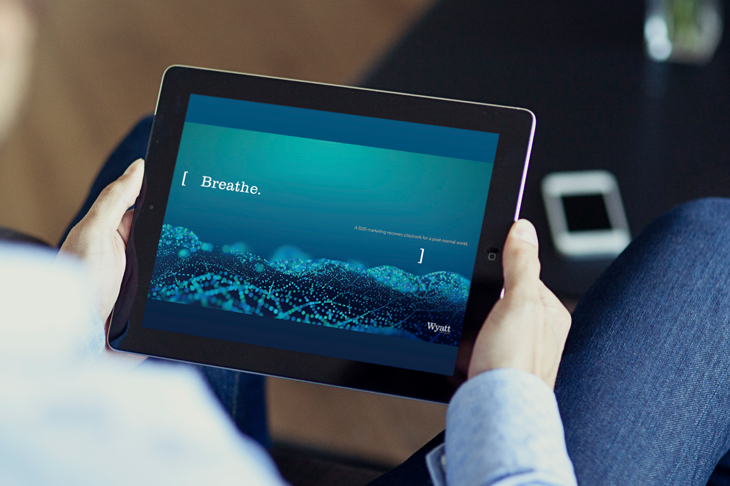- Digital Marketing
- Strategy
Creating value in construction in a post-digital world.
As the construction marketplace looks beyond simply price, we look at how brands are reconsidering their own value drivers – and how they’re communicated.

In 2019, UK construction was already showing signs of slowdown, with uncertainty over Brexit among the chief causes. There were other underlying factors too, each of which has hindered growth in the sector for a number of years. And then, of course, came the coronavirus, bringing that slowdown to a virtual halt. Since then things have recovered, and there’s even cause for some optimism. But among the uncertainty we still face, one thing is abundantly clear: the construction industry has returned to a very different world – one of stricter guidelines, new working practice and changed expectations.
As the construction marketplace looks beyond simply price, we look at how brands are reconsidering their own value drivers – and how they’re communicated.

In 2019, UK construction was already showing signs of slowdown, with uncertainty over Brexit among the chief causes. There were other underlying factors too, each of which has hindered growth in the sector for a number of years. And then, of course, came the coronavirus, bringing that slowdown to a virtual halt. Since then things have recovered, and there’s even cause for some optimism. But among the uncertainty we still face, one thing is abundantly clear: the construction industry has returned to a very different world – one of stricter guidelines, new working practice and changed expectations.
The seeds had been sown long ago, before anyone had heard of coronavirus. Where cost had for so long been a key market driver, other factors had begun to challenge its dominance, including faster builds, sustainability and building well-being. As we move into post recovery, the chatter around these topics is growing louder. The consensus is that we’re at a crossroads and have an opportunity to take stock and do things differently. The mantra has become ‘build back better’, defined by the United Nations Assembly as ‘the use of… recovery, rehabilitation and reconstruction… to increase the resilience of nations and communities through integrating disaster risk reduction measures into the restoration of physical infrastructure and societal systems, and into the revitalisation of livelihoods, economies, and the environment’.

This grand vision will not be delivered on the basis of cost alone. And nor, in all likelihood, will any of the countless projects which form part of it. And so we’re seeing a shift in the expectations of investors and stakeholders who now value very different things than a few years ago. As a result, the decision-making chain is multi-layered and complex, presenting challenges for anyone attempting to market their business. This challenge is set to become even tougher as competition intensifies, meaning that construction companies will be seeking to add even greater value to their work.
Creating value by cutting costs, improving processes and becoming more efficient
So the marketplace has come to value different things, and as an agency committed to helping construction organisations create brand and business value, this set us thinking.

The way we see it is that right now, many companies across the sector are looking to create this value in their products or in their operations by cutting costs, improving processes and being more efficient. These primary drivers were well debated during Construction Week UK 2020 but what perhaps was not catered for in such detail, was the shifting expectations and demands along the decision-making chain.

How many really understand, their customers’ mindset in the current climate, and know what they’re looking for, thinking and feeling? Do they know who to reach in this extended decision-making chain, and what customers’ key objectives are? Have they reviewed their brand offer and aligned it with these needs? Do they know what their own value drivers are – and if not, how to identify them to gain advantage? Finding answers to these questions is to find a secure pathway to profitability, so rather than look ‘downstream’ at cost savings and building cheaper, the sector can also look ‘upstream’ at creating true value for customers.

While the message is important, the medium also matters and here the pandemic has also created a shift in practice. The construction industry is used to collaboration, hospitality and face to face meetings which have largely been prohibited. Digital has filled the vacuum – not just with Zoom and social media but right across the online space. True, the adoption of digital in construction has accelerated over recent years including the online hosting of UK Construction week, but it still lags behind other sectors. Many of these have entered what we can call a ‘post-digital world’ where it’s no longer talked about as having potential, but as an accepted technology: one that’s used holistically in every aspect of our personal and professional lives. This means that the focus for the construction industry must shift quickly towards creating a value-driven customer experience, across every human touchpoint.
Focusing on the needs of the customer
In essence, this involves shaping messaging around the needs of the customer. This isn’t a question of creating static ‘personas’, customer maps and generic propositions that don’t change or evolve. It’s about using qualitative and quantitative research to track emerging trends and map changing customer perceptions, not to mention monitoring their use of communications channels – something that is changing at an unprecedented pace. The result is an agile and real-time insight into market needs, giving brands the opportunity to respond with the same agility. In this way customer journey mapping and CX become living documents which can inform everything from brand positioning and campaign management through to choice of media and the way that product portfolios are managed. The ability to adapt propositions to reflect changing needs helps maintain the value and relevance of brands and gives businesses the flexibility they need to thrive in a coronavirus and post-coronavirus world. By putting customer and market insight at the heart of activity, businesses will be able to increase penetration, reduce risk and accelerate time to market.
In summary, we’re seeing a shift in construction towards a new set of expectations. This means it’s time for organisations to reconsider their own value drivers and how they’re communicated. At the heart of all this is their core proposition or brand story. It’s here that the true value of any business is to be found. It should faithfully reflect the organisation, be aligned to customers and employees and their expectations whilst having the necessary ‘flex’ to accommodate fast and responsive adaptations. It should also be optimised for the post-digital world. Offering a constant point of reference in a world of constant change, brands can provide the real foundations for solid long-term success.
We talk about how brands can do this in our playbook, Breathe. If you’re interested, email breathe@wyattinternational.com, and we’ll send you a copy.

The ability to adapt propositions to reflect changing needs helps maintain the value and relevance of brands and gives businesses the flexibility they need to thrive in a coronavirus and post-coronavirus world.
To find out more about our experience in the built environment and construction sectors, please call +44 (0)121 454 8181, or email hello@wyattinternational.com